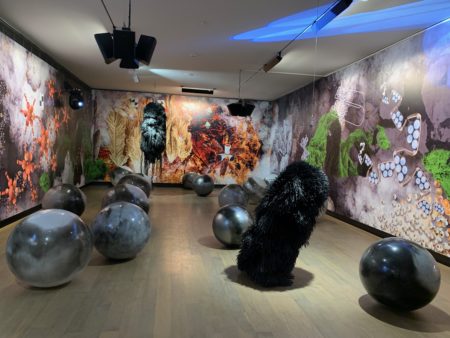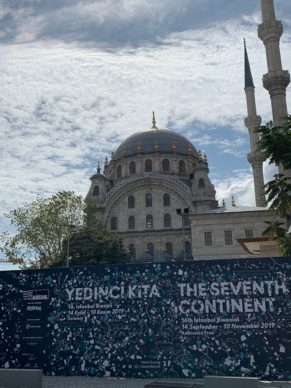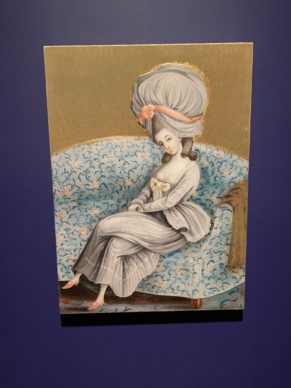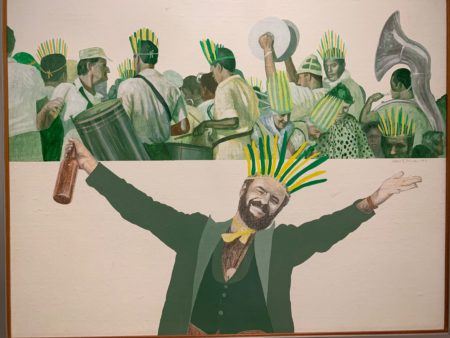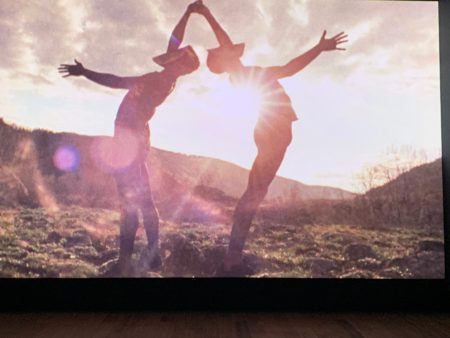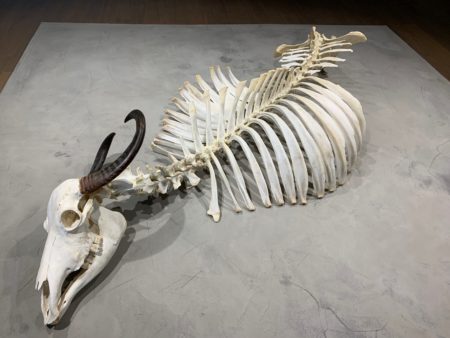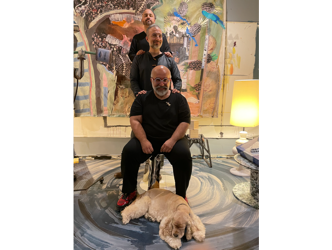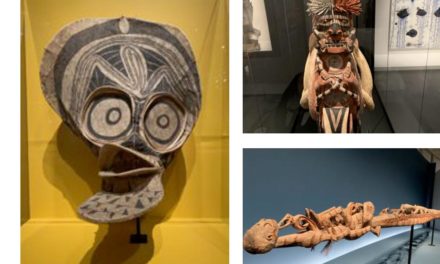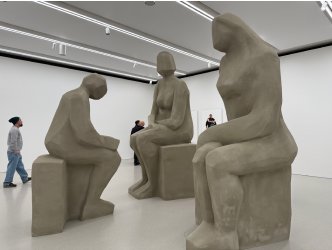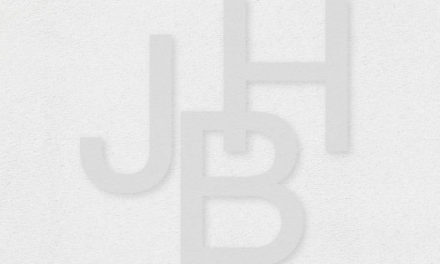A seventh continent
It’s like something out of science fiction. Human beings today have been granted a seventh continent – in addition to the known ones – that occupies over 1.6 million square kilometres of the Pacific Ocean and is made up entirely of plastic waste. This “new world” is no El Dorado for a modern-day Christopher Columbus. It’s a land of nightmares.
Istanbul Biennal
The seventh continent is also the title of the Istanbul Biennial which has just opened.
Nicolas Bourriaud
The French curator of the event, Nicolas Bourriaud, brings us into contact with this reality in his own way. He has asked fifty six artists with very different horizons to address not only the Anthropocene, this period of humanity in which we are all having an impact on the earth, but also what happened before, what could happen after, and even alternative worlds.
Positive points
As an introduction to the subject, besides the urgent nature of the topic at hand, it must be said that the Istanbul Biennial presents two positive points.
Coherence
Firstly, whilst the majority of biennials are fairly disjointed, this one is defined by its general coherence in the selection of artists.
New forms of art
Secondly, one of the major problems with very political exhibitions has to do with their lack of aesthetic interest. When I questioned Bourriaud on the importance of political art in current times he replied: “if the purpose of art were purely political, in that case I’d rather read the newspaper. Art must also invent new forms.” He’s right.
And we find some of these new forms in Istanbul.
Jonathas de Andrade
The Brazilian artist Jonathas de Andrade, whom I spoke to previously on the occasion of the Rencontres de la Photographie in Arles (watch the report) has conceived a film composed of a series of six fishermen who evolve within what resembles an exotic paradise. They move in harmony at the heart of this sublime scene of nature, caressing the dying fish that they appear to have caught by hand. It’s a total fiction of exceptional sensuality, but it’s also a statement on the ambiguity of our relationship with the environment. The fish that cannot breathe is being held by the fisherman in an act of sadistic worship. Andrade has invented a new kind of Anthropocene ritual that you don’t get tired of watching and re-watching. He talks about his experience.
Korakrit Arunanondchai
I met the Thai artist Korakrit Arunanondchai at the Venice Biennale (watch the report). At Istanbul, in a video of breathtaking depth and sensitivity, he makes subtle parallels between the state of his beloved grandmother clearly suffering from senility, and the state of the earth, chaotic and losing memory. The images from different contexts merge together, accompanied by a voiceover in French from an old Vietnamese woman talking to her grandson.
Haegue Yang
One of the most sophisticated installations is that of the Korean artist who lives in Berlin and Seoul, Haegue Yang, who mixes voluminous artificial straw objects – a material that is used everywhere including in shamanic rituals – with digital photo wall paper that makes different observations about human behaviour, and set against a soundtrack of birdsong. As the artist explains – she did not wish to film an interview with me – this is actually the “sound from the recording of the historic meeting of the heads of state of North and South Korea. This took place in the demilitarized zone in between the two countries, which is in fact one of the most militarized zone in the world. But because no human being is authorized to stay there then an extraordinary flora and fauna have developed. That’s why, when the two heads of state met in private, only the birds could be heard”. Nature came to flourish in the heart of current affairs.
She will be the subject of an exhibition at Moma in New York on the occasion of the museum’s reopening from 21 October.
Piotr Uklanski
There’s no need to remind ourselves of the issues of nationalism that have led to numerous excesses, massacres and destructions throughout history.
The Polish artist who is passionate about history and is based in New York, Piotr Uklanski has created for the Biennial a gallery of pictures that copy portraits of Polish and European figures dressed as Easterners. What are called “turqueries” were, once upon a time, especially in the 18th century, seen to be good taste.
I interviewed Uklanski, who had already left, over Skype
He will be exhibiting the Ottomania series at the Luxembourg & Dayan gallery in New York from 19 September to 24 October.
The airport and the buffalos
As I was leaving, with my mind spinning with all the urgent issues of today, before thinking about this trip’s impact on my carbon footprint, but also before thinking how important it is to support a show like the Istanbul Biennial that is open to the world and our times, in a country run by a sinister figure, I arrived at the new airport in Istanbul.
Ozan Atalan
It was at that moment that I remembered the installation by Turkish artist Ozan Atalan, which told how the extraordinary water buffalo had disappeared from the mountains surrounding Istanbul following the construction of the massive airport.
So what can be done?
Support independent news on art.
Your contribution : Make a monthly commitment to support JB Reports or a one off contribution as and when you feel like it. Choose the option that suits you best.
Need to cancel a recurring donation? Please go here.
The donation is considered to be a subscription for a fee set by the donor and for a duration also set by the donor.

